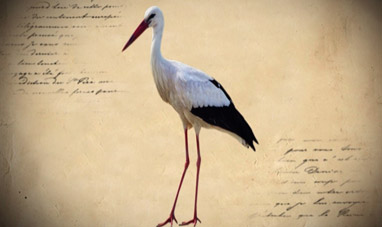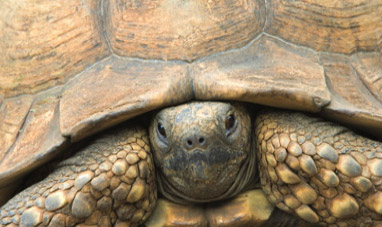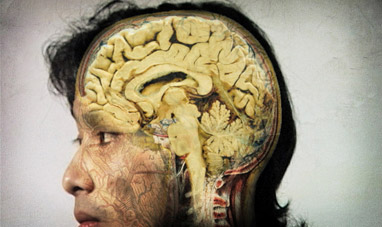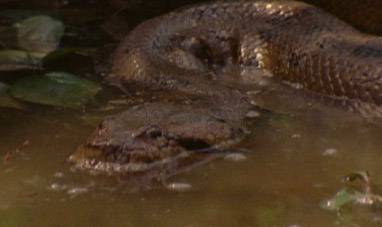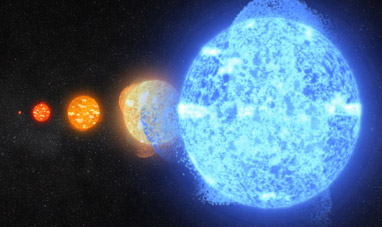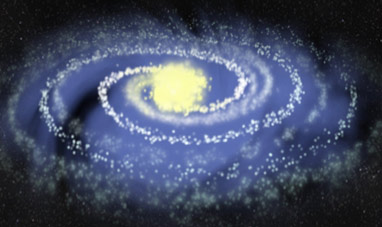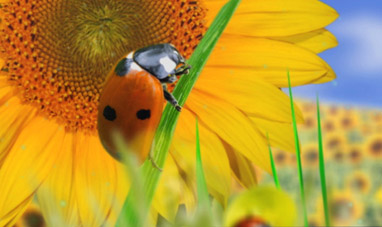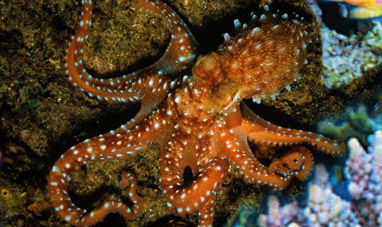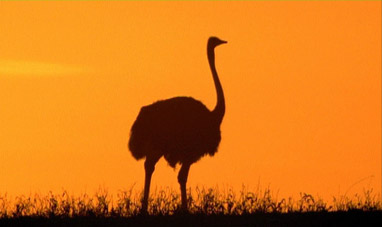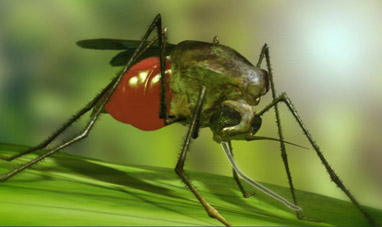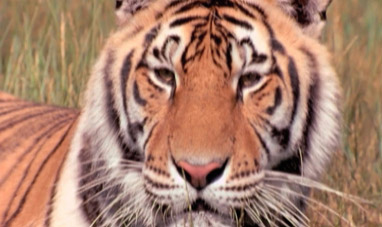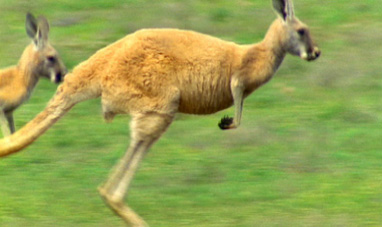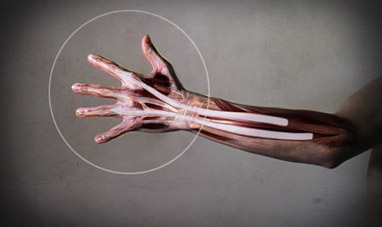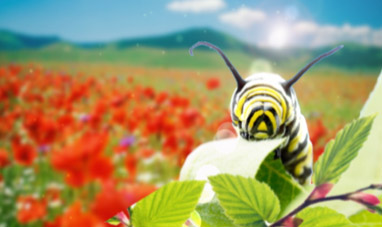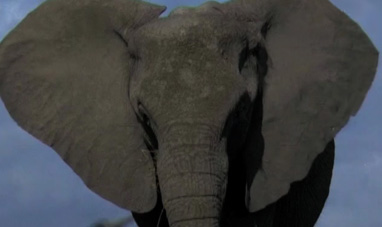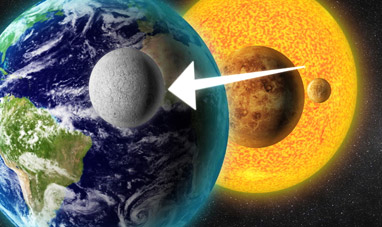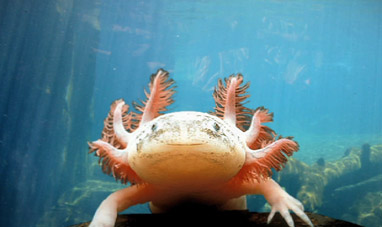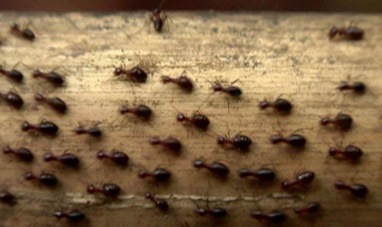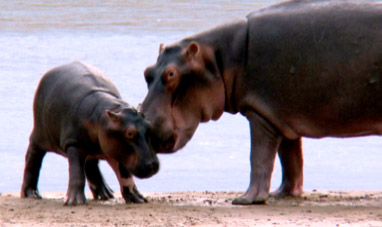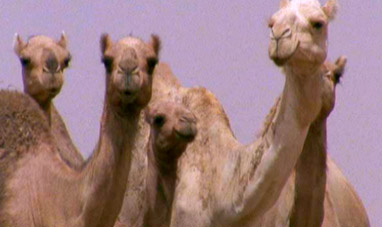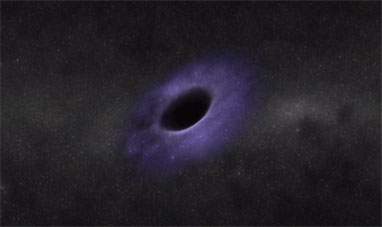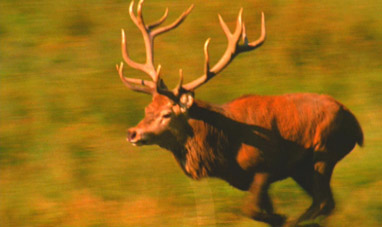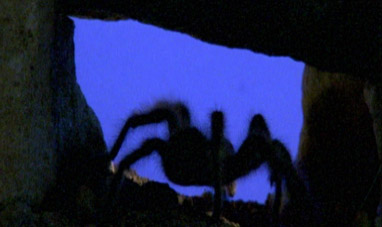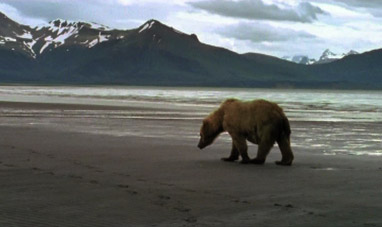Crocodiles are large, ponderous, amphibious animals. The crocodile as we know it today appeared on the earth during the Cretaceous period, around 95 million years ago. This living link with dinosaur-era reptiles hasn't changed much since then. Crocodiles are found mainly in the lowland, humid tropics of the Northern and Southern hemispheres. They can be found in various regions of the world. The Nile crocodile lives in Africa. The Orinoco crocodile in Latin America. The marine crocodile can be found in Australia and South-East Asia. Crocodiles may measure up to six or even eight meters, and weigh up to a ton. They have a streamlined body, and short, sturdy legs. They are totally covered in tough scales that provide a sort of coat of armor.
Crocodiles have triangular heads with protruding eyes and nostrils. When a crocodile swims, it is totally submerged, only its eyes and nostrils stay in the surface, allowing it to see and breathe. Crocodiles have a long life span, 70-80 years on average. Some specimens may even live to a hundred. The crocodile is a skilful swimmer and spends much of its time in the water. However, it can also cover considerable distances on land, sliding on its belly and supporting itself with its strong legs. The crocodile tends to live in groups and is a predator. In the first stages of its life, it feeds on small fish and amphibians. An adult crocodile may also eat large mammals. In general, it devours its prey after drowning it. A crocodile reaches sexual maturity after age seven. The male attracts the female with a call and by releasing a musky smell from its neck and intestine glands. Mating takes place in the water.
The crocodile is oviparous, in other words, it lays eggs. After laying them, the female places them in a warm place, covered in leaves or in holes dug in the sand. The eggs hatch after about three months, when the young cut through the shell with their teeth. They are then raised by their parents for over a year.
In Asian cultures, the crocodile represents death. The figure which accompanies souls into the land of the dead is portrayed as a crocodile. For the Maya and Aztec populations of Central America, on the other hand, the crocodile figure is linked to creation myths. In ancient Egypt, the crocodile was considered sacred. It was thought to be the incarnation of the god Sobek, fighter of evil and lord of the waters. The god was represented as man with a crocodile head. [for graphics: show] The animal was worshiped as a symbol of fertility and was often embalmed after its death. The expression "crocodile tears" refers to a false or insincere display of emotion. After eating, a crocodile’s eyes water a lot, as if it were sorry it had killed and devoured its prey. Obviously, this is not the case. Crocodiles do not weep or cry for remorse, their eyes water as a physiological reaction to digestion.
Crocodiles have triangular heads with protruding eyes and nostrils. When a crocodile swims, it is totally submerged, only its eyes and nostrils stay in the surface, allowing it to see and breathe. Crocodiles have a long life span, 70-80 years on average. Some specimens may even live to a hundred. The crocodile is a skilful swimmer and spends much of its time in the water. However, it can also cover considerable distances on land, sliding on its belly and supporting itself with its strong legs. The crocodile tends to live in groups and is a predator. In the first stages of its life, it feeds on small fish and amphibians. An adult crocodile may also eat large mammals. In general, it devours its prey after drowning it. A crocodile reaches sexual maturity after age seven. The male attracts the female with a call and by releasing a musky smell from its neck and intestine glands. Mating takes place in the water.
The crocodile is oviparous, in other words, it lays eggs. After laying them, the female places them in a warm place, covered in leaves or in holes dug in the sand. The eggs hatch after about three months, when the young cut through the shell with their teeth. They are then raised by their parents for over a year.
In Asian cultures, the crocodile represents death. The figure which accompanies souls into the land of the dead is portrayed as a crocodile. For the Maya and Aztec populations of Central America, on the other hand, the crocodile figure is linked to creation myths. In ancient Egypt, the crocodile was considered sacred. It was thought to be the incarnation of the god Sobek, fighter of evil and lord of the waters. The god was represented as man with a crocodile head. [for graphics: show] The animal was worshiped as a symbol of fertility and was often embalmed after its death. The expression "crocodile tears" refers to a false or insincere display of emotion. After eating, a crocodile’s eyes water a lot, as if it were sorry it had killed and devoured its prey. Obviously, this is not the case. Crocodiles do not weep or cry for remorse, their eyes water as a physiological reaction to digestion.



